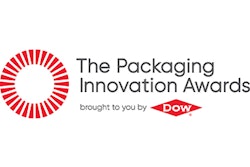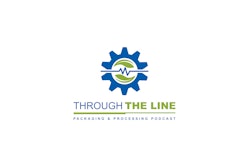The American packaging market isn’t there yet. The EU and Canada have moved closer than the U.S. to the goal of packaging economy (development-production-distribution-functionality-disposal/reuse) circularity. They’ve done this largely by complying with Germany’s Grüne Punkt (Green Dot) government directive. The Green Dot dictates are at the heart of the EU’s continually expanding Packaging and Packaging Waste (PPWD) directive now being transformed into a tighter, more restrictive regulation.
The American packaging market has never been a fan of big government’s intrusion into their packaging operations. Packagers are guided more by the vox populi (voice of the people) than the vox imperii (voice of the empire).
Responding to consumers’ pro-sustainability packaging sentiments, a growing number of international CPGs have set packaging reduction/simplification goals and opted to lighten their packaging carbon footprints. Candy marketers are voluntarily switching from plastic to paper wraps. Aluminum is the material of choice for carbonated soft drinks (CSDs). Paper bottles (with and without flexible barrier liners) are now a thing. Returnable/refillable containers are making a market comeback, difficult to isolate and recycle material layers are being stripped out of rigid and flexible packaging structures, and sustainability/circularity is the enlivened central theme of a highly visible corrugated board marketing campaign.
To be sure, packaging managers are aware that these actions are a strong talisman in keeping the wolf of restrictive packaging regulations away from the door.
Still, state legislators are quilting a patchwork of extended producer responsibility (EPR) regulations to force broadly defined “producers” to pay to manage post-consumer packaging waste, rather than the municipal authorities who have been handling the waste.
Maine—An Act to Support and Improve Municipal Recycling Programs and Save Taxpayer Money (LD 1541). This Law charges producers for managing and recycling packaging waste; requires producers of paper and packaging waste to fully finance stewardship organizations to manage and help develop methods to collect and recycle products on the producers’ behalf. It covers most packaging materials; exempts paint and beverage containers, small businesses and low-volume (between 1 and less than 15 tons annually) packaging producers. Rationale: Incentivize producers to “create packaging that can be easily recycled and contains more recycled content.”
Oregon—Plastic Pollution and Recycling Modernization Act (SB 582). This establishes a producer responsibility program for packaging, printing, and writing paper, and food service ware. Producers are required to join producer responsibility organizations (PROs), which administer producer responsibility programs on behalf of members. Producers are required to cover about 25% of the costs related to recycling in the state.
Colorado—Producer Responsibility Program for Statewide Recycling (HB 22-1355). Covered are packaging materials except those intended for long-term storage or protection of durable products for at least five years; paper products that, through their use, could become unsafe or unsanitary to handle; financial statements, medical documents, or other documents required by law; bound books; beverage containers subject to a returnable container deposit; packaging materials used exclusively in industrial or manufacturing processes; packaging materials used to contain drugs, medical devices, or dietary supplements and equipment and materials used to manufacture such products; packaging materials used to contain animal biologics; packaging materials used to contain a products regulated under the “federal insecticide, fungicide, and rodenticide act;” packaging used to contain architectural paint; packaging used to hold products covered by the Poison Prevention Packaging Act of 1970; packaging for repaired and reconditioned portable electronic devices; paper used for printed news publications; packaging for certain infant formulas and nutritional supplements, and any other materials that the Solids and Hazardous Waste Commission determines not be covered.
California—Plastic Pollution Prevention and Packaging Producer Responsibility Act (SB54). The law requires all packaging in California be recyclable or compostable by 2032, plastic production to be reduced by 25%, and 65% of all packaging to be recycled after use.
Interest in EPR legislation of packaging—particularly plastics packaging—has increased in the last year or so, according to the National Caucus of Environmental Legislators (NCEL).
At least eight other states are considering legislation “to hold producers accountable for the end-of-life management of plastic packaging.” The states on NCEL’s list include Hawaii, Illinois, Kentucky, Maryland, New Hampshire, New York, Vermont, and Washington.
Manufacturers and legislators have similar interests but different motives in reducing packaging waste. Satisfying customers and avoiding the patchwork of bureaucracies and red tape of fifty or more state EPR platforms will always be the preferred and most effective choice of managers in their drive for packaging circularity.
Ben Miyares, Packaging Sherpa, is a packaging market and technology analyst and is president of The Packaging Management Institute, Inc. He can be reached at [email protected].

























